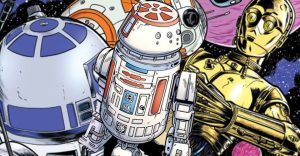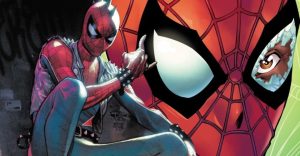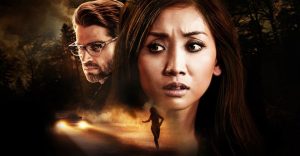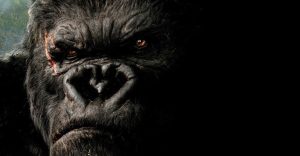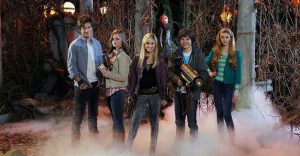Mulan (1998): 10 Behind-The-Scenes Facts About The Disney Classic

Even if it’s one of the later movies to enter this particular age in Disney animation, Mulan is one of the most memorable films from the Disney Renaissance. While it never reached the level of cultural impact of something like The Lion King, it holds a special place in the hearts of many who grew up with it.
So, with Disney’s remake telling the story of Mulan to an entirely new generation, there’s no better time to look back on what made the original so special. Considering that this one film actually took nearly five years to make, it makes sense that some of the most interesting trivia about the film regards what went on behind the scenes.
10 Mulan Was The First Film Made By Disney Animation’s Florida Studio

When Mulan was entering its early development stage, Walt Disney Feature Animation enlisted their Florida studio, which had previously worked on films like The Lion King and Beauty and the Beast, to handle the production.
The studio would go on to make two more animated features for Disney, Lilo & Stitch in 2002 and Brother Bear in 2003.
9 The Filmmakers Traveled To China For Research

To make sure that Mulan‘s depictions of Chinese culture, history and locations were as accurate as possible, several members of the creative team toured China, looking for inspiration and guidance.
These trips would lead to the conceptualizations of some of the film’s best (and most cinematic) shots, with most of the scenery, background, and even costumes being as historically accurate as possible.
8 Mulan Was Originally A Romantic Comedy

Believe it or not, Mulan was originally intended as a romantic comedy. This comedic version would follow Mulan after her father arranges for her to be engaged to Li Shang. Mulan then runs away from home, wanting to take control of her own fate rather than be held to another’s decisions.
When screenplay writer Chris Sanders was first brought on to the project, he proposed that this idea be scrapped entirely in favor of a story that was more accurate to the original work. Some romantic tension between Mulan and Li Shang remained, but it was no longer the focus of either the story or its comedic beats.
7 The Directors Have A Cameo

Mulan was co-directed by Tony Bancroft and Barry Cook, who were — at the time of its release — both long-time Disney animators. Fittingly, they found their way into the movie through cameos.
They appeared alongside each other in the film, cameoing as the fireworks operators who are scared off by Mushu during the final attack on the Emperor’s castle.
6 Eddie Murphy Recorded His Lines In His Basement

After both Joe Pesci and Richard Dreyfuss turned down the role of Mushu, Michael Eisner had his eyes on Coming to America star Eddie Murphy. Mulan was going to be Murphy’s first voice role in an animated film, but it would certainly be one of his most iconic roles of all time.
Interestingly, though, Murphy didn’t feel like making the trip to a recording studio. Instead, he opted to tape his lines from the basement of his New Jersey mansion.
5 Jackie Chan Voiced Li Shang In 3 Chinese Dubs

After voice acting as Beast in the Mandarin dub for Beauty and the Beast, Jackie Chan was in good standing with Disney, and thus was offered the opportunity to have a role in Mulan. He ended up playing Li Shang in all three Chinese dubs.
Notably, he also appeared in a promotional music video for the film, set to his rendition of “I’ll Make a Man out of You” and featuring a sampling of his unique stunt choreography. This was released on the Mulan special edition DVD in 2004.
4 Real-Life Models Were Used For The Fight Choreography

While Jackie Chan was technically involved with Mulan to some degree, he wasn’t the one behind its masterful fight sequences. That responsibility fell on the animators, but they needed references to work off of to make sure they got each and every movement right.
The film’s credits mention two stuntpeople, Mimi Chan and George Cheung, as the “martial arts video references” for Mulan and Li Shang, respectively. Also listed is known fight director B.H. Barry as a “martial arts advisor.”
3 Mulan’s Fan Technique Was Based On A Real Martial Art

Even if it is a somewhat cartoonish interpretation, the moment during Mulan’s climactic fight with Shan Yu where she disarms him by using a fan is one hundred percent based in reality. Tessenjetsu, the art of the Japanese war fan, was once widely practiced by samurai and even makes an appearance in several early Japanese legends.
It’s true that Chinese and Japanese martial arts have several entirely different qualities, but it’s not hard to see the directors of Mulan allowing this moment of crossover for the sake of the film.
2 The Animators Wrote Easter Eggs In Chinese

Most animated films include a bevy of Easter Eggs because the medium makes hiding them so much easier. In Mulan, there are a lot of hidden Easter Eggs that only make sense if you know how to read the Hanzi (or Chinese characters) present throughout.
For instance, during the musical number “Reflection,” the stone Mulan looks into actually has the names of the film’s animators carved into it.
1 New Software Was Developed To Enhance The Animation

The sheer complexity of Mulan‘s animation required that Disney develop software to streamline some of the more tenuous aspects. The programs Attila and its variant Dynasty (their names being obvious homages to the film itself) were both devised in order to simulate thousands of independently-moving individuals so the animators didn’t have to draw them in one by one. This was especially useful in animating Shan Yu’s armies and the crowds of spectators in the capital.
Another piece of software that came in handy was Faux Plane, which was used for several of the film’s establishing shots. Its main function was to make two-dimensional images appear three-dimensional, thus making it easier to create vast landscapes or ancient Chinese cities.
About The Author












